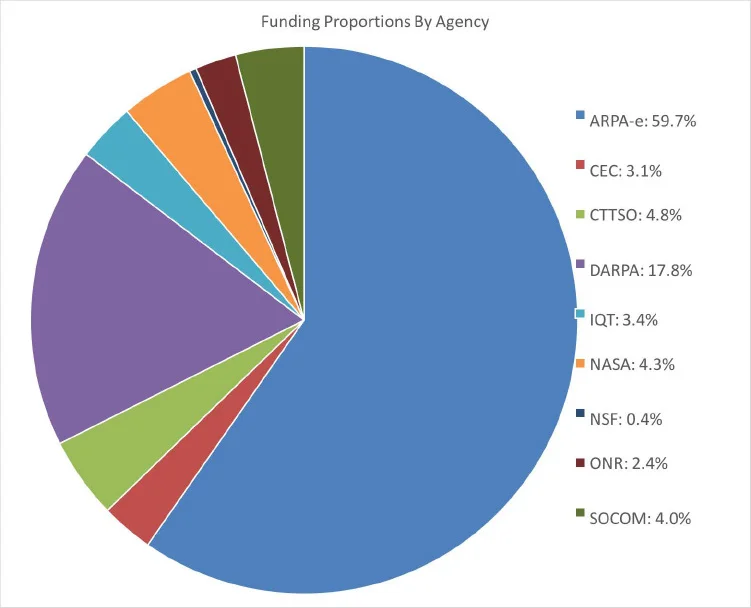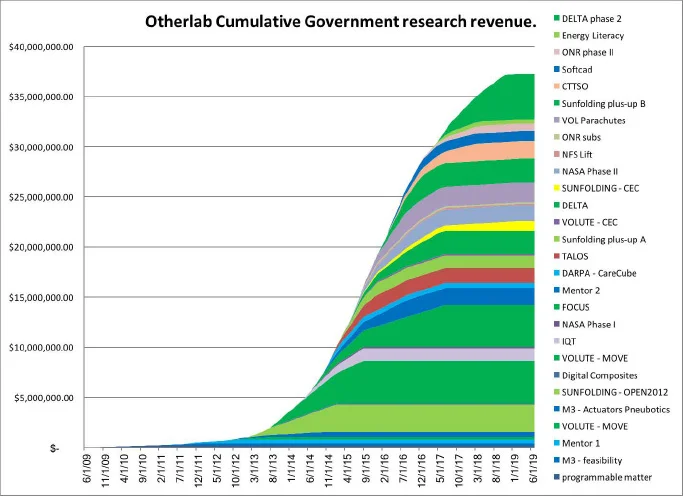A Case for Saving ARPA-e
ARPA-e, the Advanced Research Projects Agency - energy, was created after the global financial crises, as a small department within the DOE charged with modeling itself on DARPA and mandated to find breakthrough energy technologies. It was a good idea then. It is a good idea now. Energy technologies will define this century - just as they did the last two.
Unfortunately for ARPA-e it isn’t DARPA. The "D" in "DARPA" is Defense. It was renamed DARPA in 1972, back to ARPA in 1993, and reverted to DARPA again in 1996. DARPA was and is incredibly successful in creating and nurturing radical innovation. We used to joke around my office that the challenge for ARPA-e is that it didn’t invent the internet yet. You can imagine the debate between politicians: “We should eliminate this agency… DARPA, what does it do?” “It does defense - it invented the internet!” “OH, we should keep it then!”
It took time and money to invent the internet. By agency standards ARPA-e is in its infancy. It only has a $300M annual budget compared to DARPA’s 3bN. 10% of America’s energy is imported as foreign oil. A further 10% is imported in the form of foreign goods. These energy deficits manifest themselves as the lion’s share of our trade deficit, and are a good portion of the national debt. America can afford to, and needs to invest in, energy solutions that change this equation, and that’s before we even consider the importance of investing in the energy technologies critical to solving climate change.
I have been a recipient of multiple awards from ARPA-e. It was critical to the survival of MakaniPower.com, a company I founded and which later sold to Google and is ambitiously developing airborne wind turbines to take advantage of a new renewable resource and lower the cost and increase the reliability of wind energy. It helped us bootstrap Sunfolding.com from an idea to lower the cost of solar tracking, to a company that is expanding rapidly and is now selling 100’s of MW’s of installations across the US. With it we developed technology to increase the range and safety of vehicles and trucks powered by Natural Gas, an abundant domestic fuel. The same technology is now being applied to improve the performance and costs of hydrogen vehicles. We have ongoing ARPA-e funding to further refine a textile technology we created that for the first time ever makes textiles that react to their environment - they get warmer as it gets colder and they get cooler when it gets warmer! We also have a small award to do deep data analysis on US energy flows. This tool can help focus everyone’s efforts on the highest impact areas in the economy.
We have created hundreds of jobs and multiple profitable companies with this seed funding from ARPA-e. We have been able to leverage these funds nearly ten-fold with private investments from individuals, venture funds, and corporate partners. In my experience, it is simply untrue that the private sector will pick up the slack in early stage energy technologies. Silicon Valley and US venture capital is great at taking things to scale, but it is terrible at early stage innovation, especially in hardware and energy. We need public and private funding here. DARPA invented the internet (funded by the taxpayer), Silicon Valley took it to scale. Rinse and repeat.
ARPA-e is under fire. Trump’s draft budget zero’s out its money, effectively eliminating the agency. There are already efforts to undermine and hamper the agency even before the budget is debated by congress.
America will be made greater by clean, cheap energy technologies. American manufacturing would be advantaged by being the cleanest and lowest carbon per product output in the world. America has the best innovation and venture funding engines, we need to turn them on, not turn them off to these opportunities. If we turn them off America will quickly lose its capital advantage and its talent in new energy and manufacturing technologies. They will go to the countries where they have a chance of saving the planet and building the giant industries and critical infrastructure of tomorrow.



